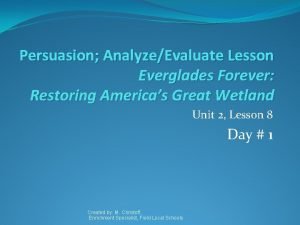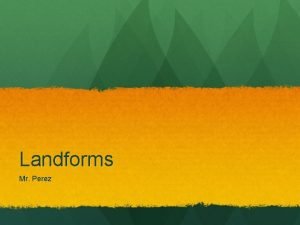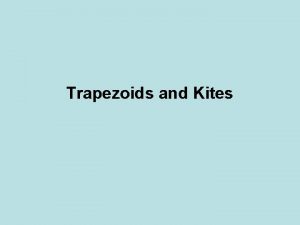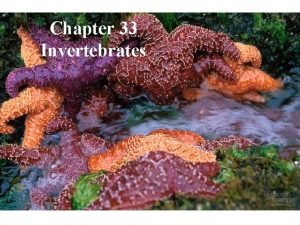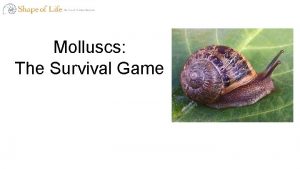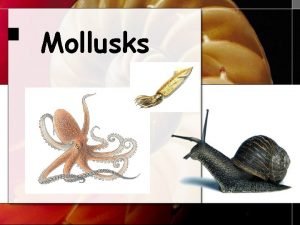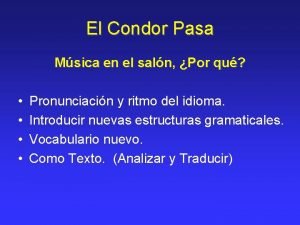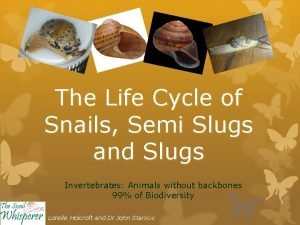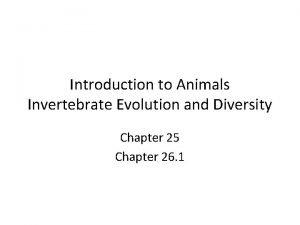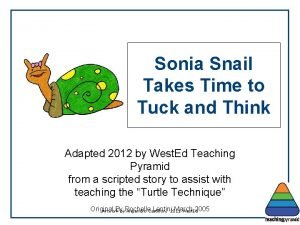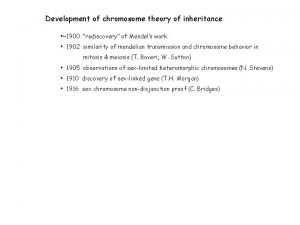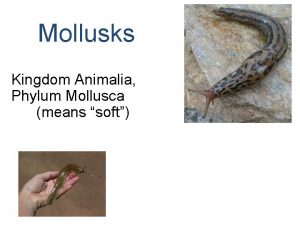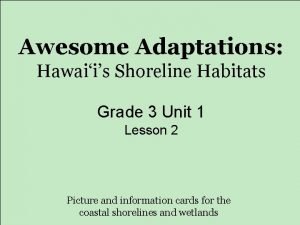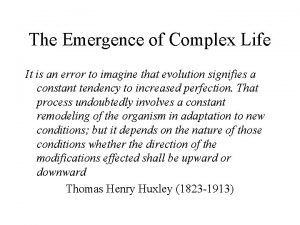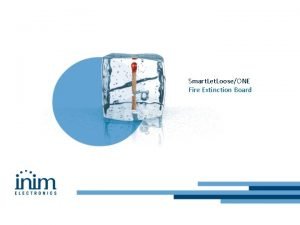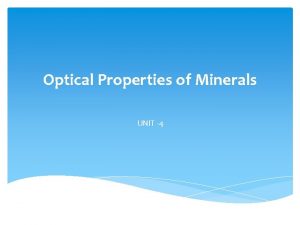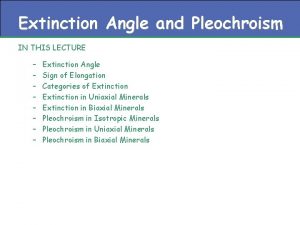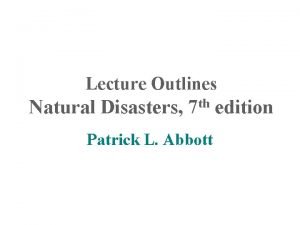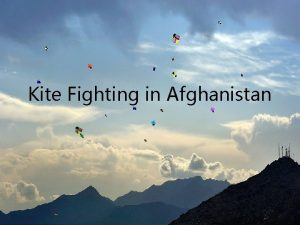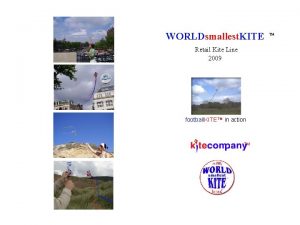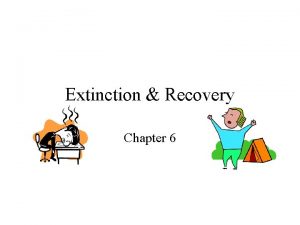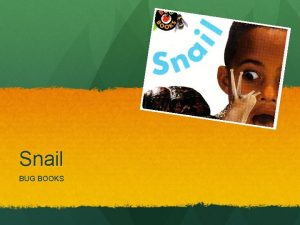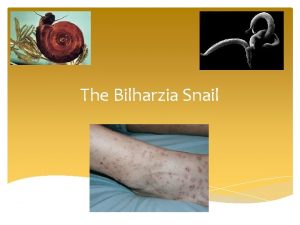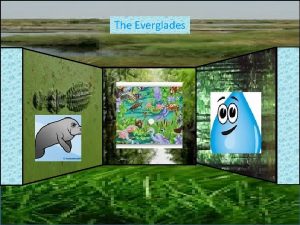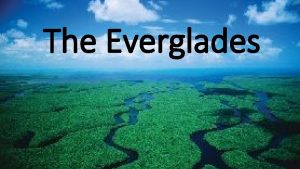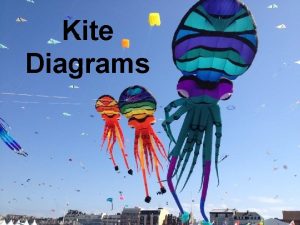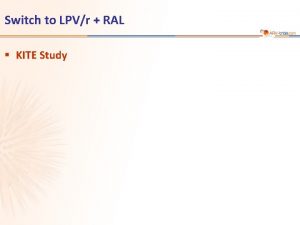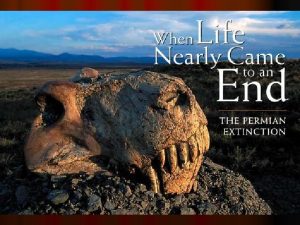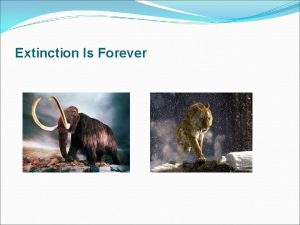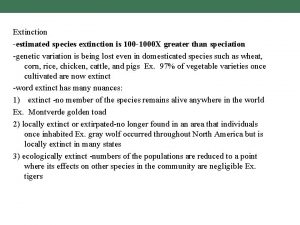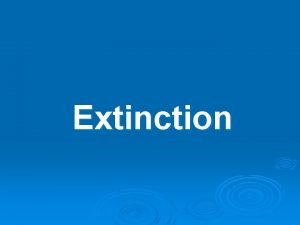Everglades Snail Kite Path to Extinction Description of
































- Slides: 32

Everglades Snail Kite Path to Extinction

Description of Snail Kites 45 inch wingspan § 14 -16 inches long § Weighs 12 -20 ounces § Photo courtesy of Dr. Wiley Kitchens

Female Snail Kite Male Snail Kite §Brown with white streaks §Slate Grey §Red legs §Yellow legs §Square tail with white base and black tip §Red eyes Photo Courtesy of Dr. Wiley Kitchens

Juvenile Snail Kite § Cinnamon colored § Buff streaks § Brown eyes § Yellow legs Photo courtesy of Dr. Wiley Kitchens

Social Structure § Form roosts of two to a few hundred § Flexible breeding efforts § Will migrate to better feeding areas Photo courtesy of Wiley Kitchens

Feeding Habits Searching For snails Photo courtesy of Dr. Wiley Kitchens

Still Hunting Only snails at surface are vulnerable Photo courtesy of Dr. Wiley Kitchens

The Apple Snail §Comes to surface infrequently §Breathes with gills and a lung Photo courtesy of Dr. Wiley Kitchens

Range Photos courtesy of Dr. Wiley Kitchens

Habitat Photo courtesy of Dr. Wiley Kitchens

Marsh Habitat Cypress Prairie Habitat Photo Courtesy of Dr. Wiley Kitchens

Lake Okeechobee Habitat Northern Lakes Habitat Photo Courtesy of Dr. Wiley Kitchens

Peripheral Habitat Photo courtesy of Dr. Wiley Kitchens

Nesting §Two-year olds §February-June §Acrobatics Photo courtesy of Dr. Wiley Kitchens

Nests § Nest singly or colonies § Males build nest § Nests made of sticks lined with leaves § Must be over water § 2 -4 spotted eggs § Incubate 27 days Photo courtesy of Dr. Wiley Kitchens

Fledgling Care § Fledge after 4 to 5 weeks § Parents feed even after fledging § May raise more than 1 brood § Parent desertion Photo courtesy of Dr. Wiley Kitchens

Status Federal Endangered Species Act § Migratory Bird Treaty § Chapter 39, Florida Administrative Code § Photo courtesy of Dr. Wiley Kitchens

Threats to Species Population Decline Threatened by habitat loss § Draining of the everglades § Loss of food supply § Photo Courtesy of Dr. Wiley Kitchens

Threats to Species Drought may potentially have an impact on population § Cause snail reduction § Reproduction reduced § Photo courtesy of dr. Wiley Kitchens

Water Originated as agricultural runoff § Nitrogen and phosphorus § Altering habitat § Photo Courtesy of Dr, Wiley Kitchens

Water Importance Vegetation altered from flooding § Snails require long wet spells § Too long destroys nesting sites § May require areas with continuous flooding § Photo courtesy of Dr. Wiley Kitchens

Management and Conservation § § § Maintain water quality and quantity Decrease nutrient runoff Important to conserve water Optimize apple snail populations Control exotic species Prevent human disturbance

Research Photo courtesy of Dr. Wiley Kitchens

Research Winter surveys § Colored leg bands § Radio transmitters § Photo Courtesy of Dr. Wiley Kitchens

Research § § § Nesting failure Predation, collapse and abandonment Placed in cattails Less frequent in Everglades More frequent in Lake habitats Photo courtesy of Dr. Wiley Kitchens

How You Can Help Encourage Wetland Conservation

Conserve Water Resources

Support Establishment of Wetland Preserves Photo courtesy of Dr. Wiley Kitchens

Encourage Green Lawn Management

Report Any Harassment of Snail Kites Lakeland 1 -800 -282 -8002 West Palm Beach 1 -800 -432 -2046 Photo courtesy of Dr. Wiley kitchens

Summary § § § § Snail kites are medium size hawks Communal roosting and nesting Feed on apple snails by skimming surface Range is in a few areas of south Florida Draining of everglades impacted population Encourage conservation of wetlands and water Encourage no-pesticide lawn management

Acknowledgements Developed by: April. Weaver and Dr. Mark Hostetler, Department of Wildlife Ecology and Conservation, IFAS, University of Florida In conjunction with: Dr. Wiley Kitchens, U. S. G. S. , Florida Cooperative Fish & Wildlife Research Unit Florida Game and Fresh Water Fish Commission Photo credits: Photos courtesy of Dr. Wiley Kitchens
 Everglades snail kite
Everglades snail kite Background extinction vs mass extinction
Background extinction vs mass extinction Everglades forever book
Everglades forever book Major landforms of florida
Major landforms of florida Kite runner kites
Kite runner kites Kite kite
Kite kite Unity iot
Unity iot The kite runner description
The kite runner description Filo
Filo How does the cockle avoid the moon snail?
How does the cockle avoid the moon snail? Mollusk
Mollusk Translate el condor pasa
Translate el condor pasa Parts of a snail diagram
Parts of a snail diagram Life cycle of a slug
Life cycle of a slug Shrew food chain
Shrew food chain Invertebrate evolution and diversity
Invertebrate evolution and diversity Sea slug blue devil
Sea slug blue devil Snail and elodea lab
Snail and elodea lab Can't tuck snail
Can't tuck snail The galloping snail political cartoon analysis
The galloping snail political cartoon analysis Reciprocal cross
Reciprocal cross Lewis dot structure for caffeine
Lewis dot structure for caffeine Snail torsion
Snail torsion Integrantes de mcr
Integrantes de mcr Cam mechanism toys
Cam mechanism toys Pipipi snail
Pipipi snail Do snails have legs
Do snails have legs Phaneozoic
Phaneozoic Extinction board
Extinction board Perpendicular
Perpendicular Inclined extinction
Inclined extinction Quaternary extinction
Quaternary extinction Permian extinction
Permian extinction


